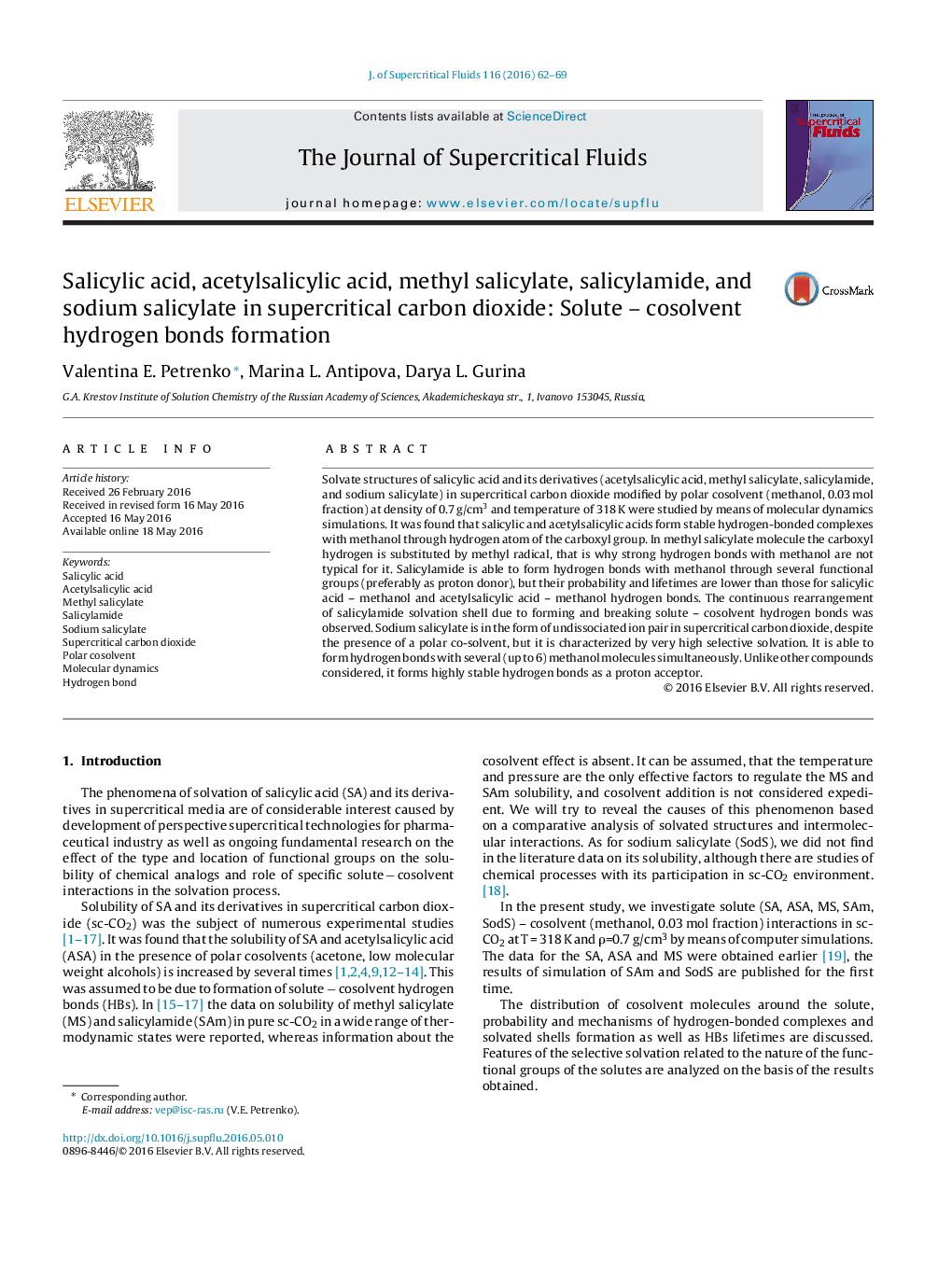| کد مقاله | کد نشریه | سال انتشار | مقاله انگلیسی | نسخه تمام متن |
|---|---|---|---|---|
| 229956 | 1427361 | 2016 | 8 صفحه PDF | دانلود رایگان |
• Simulation of salicylic acid, acetylsalicylic acid, methyl salicylate, salicylamide, sodium salicylate in supercritical CO2 is performed.
• Solvation mechanisms of considered compounds in fluid are different.
• Salicylic and acetylsalicylic acids form stable hydrogen-bonded complexes with methanol through hydrogen atom of the carboxyl group.
• For methyl salicylate regular hydrogen bonding with methanol is not typical.
• Salicylamide forms hydrogen bonds with methanol via different functional groups. These bonds are not stable, and solvated shell is rearranging.
• Sodium salicylate forms hydrogen bonds with several methanol molecules. It forms highly stable hydrogen bonds as a proton acceptor.
Solvate structures of salicylic acid and its derivatives (acetylsalicylic acid, methyl salicylate, salicylamide, and sodium salicylate) in supercritical carbon dioxide modified by polar cosolvent (methanol, 0.03 mol fraction) at density of 0.7 g/cm3 and temperature of 318 K were studied by means of molecular dynamics simulations. It was found that salicylic and acetylsalicylic acids form stable hydrogen-bonded complexes with methanol through hydrogen atom of the carboxyl group. In methyl salicylate molecule the carboxyl hydrogen is substituted by methyl radical, that is why strong hydrogen bonds with methanol are not typical for it. Salicylamide is able to form hydrogen bonds with methanol through several functional groups (preferably as proton donor), but their probability and lifetimes are lower than those for salicylic acid – methanol and acetylsalicylic acid – methanol hydrogen bonds. The continuous rearrangement of salicylamide solvation shell due to forming and breaking solute – cosolvent hydrogen bonds was observed. Sodium salicylate is in the form of undissociated ion pair in supercritical carbon dioxide, despite the presence of a polar co-solvent, but it is characterized by very high selective solvation. It is able to form hydrogen bonds with several (up to 6) methanol molecules simultaneously. Unlike other compounds considered, it forms highly stable hydrogen bonds as a proton acceptor.
Figure optionsDownload as PowerPoint slide
Journal: The Journal of Supercritical Fluids - Volume 116, October 2016, Pages 62–69
